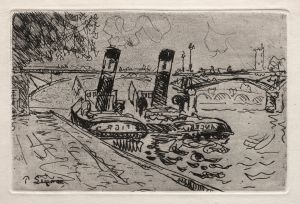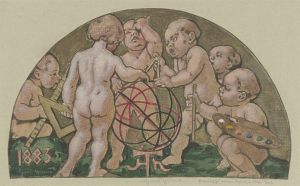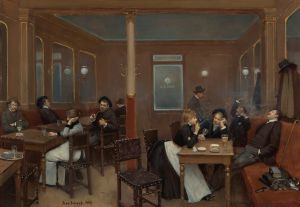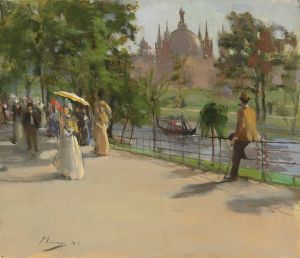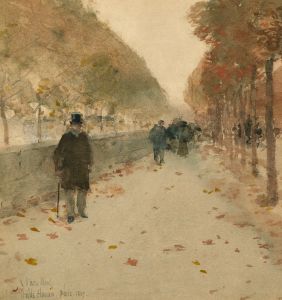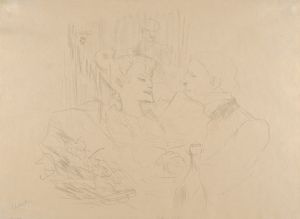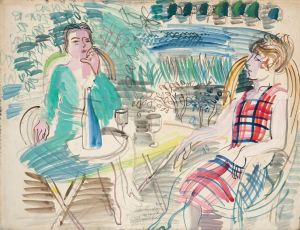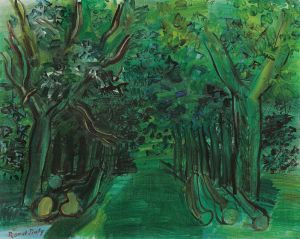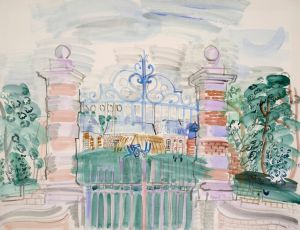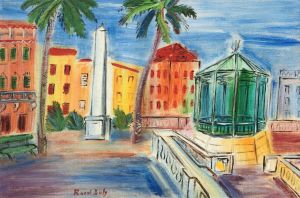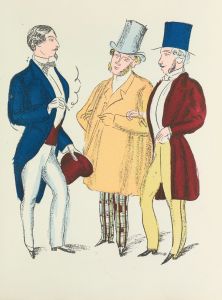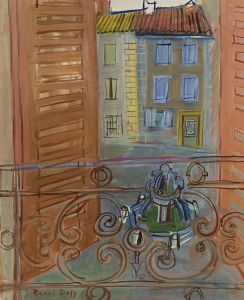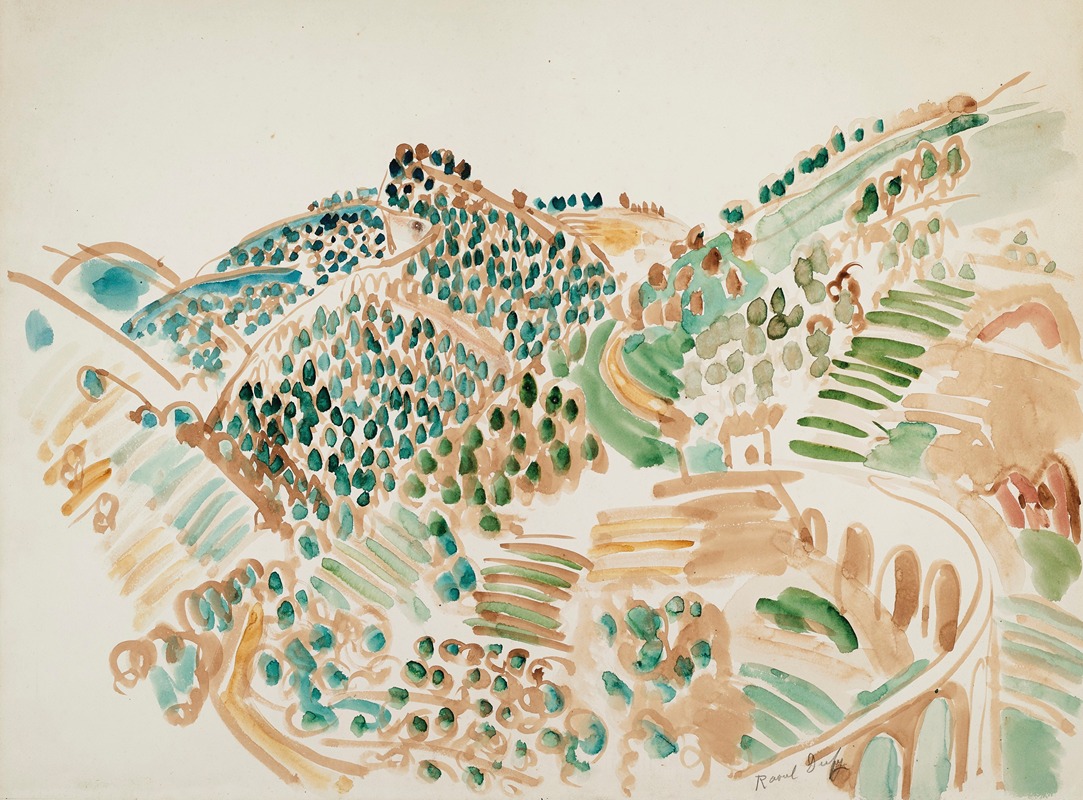
Le viaduc de Vence
A hand-painted replica of Raoul Dufy’s masterpiece Le viaduc de Vence, meticulously crafted by professional artists to capture the true essence of the original. Each piece is created with museum-quality canvas and rare mineral pigments, carefully painted by experienced artists with delicate brushstrokes and rich, layered colors to perfectly recreate the texture of the original artwork. Unlike machine-printed reproductions, this hand-painted version brings the painting to life, infused with the artist’s emotions and skill in every stroke. Whether for personal collection or home decoration, it instantly elevates the artistic atmosphere of any space.
Raoul Dufy was a prominent French Fauvist painter, known for his colorful and decorative style that often depicted scenes of leisure and urban life. One of his notable works is "Le viaduc de Vence," which exemplifies his unique approach to capturing the vibrancy of the early 20th-century French landscape.
"Le viaduc de Vence" is a painting that showcases Dufy's characteristic use of bold colors and fluid brushwork. The painting depicts the viaduct at Vence, a small town in the Provence-Alpes-Côte d'Azur region of southeastern France. This area was a popular subject for many artists due to its picturesque landscapes and the quality of light that has long attracted painters.
Dufy was part of the Fauvist movement, which emerged in the early 1900s. Fauvism is characterized by its use of strong colors and a preference for painterly qualities over representational or realistic values. Dufy, along with other Fauvist artists like Henri Matisse and André Derain, sought to express emotion through color and form rather than through detailed representation. In "Le viaduc de Vence," Dufy employs a vibrant palette that captures the essence of the scene rather than its precise details.
The viaduct itself is a significant feature in the painting, representing the intersection of nature and human engineering. Dufy's depiction of the viaduct is not just a literal representation but an exploration of how such structures fit into the natural landscape. The painting reflects Dufy's interest in the modern world and its integration with traditional landscapes, a theme that recurs throughout his work.
Dufy's technique in "Le viaduc de Vence" involves the use of loose, expressive brushstrokes, which convey a sense of movement and spontaneity. This approach allows him to capture the dynamic interplay of light and color that defines the scene. The painting's composition is carefully balanced, with the viaduct serving as a central element that guides the viewer's eye through the landscape.
Throughout his career, Dufy was influenced by various artistic movements and styles, including Impressionism and Cubism, but he maintained a distinctive style that was uniquely his own. His work often celebrated the joy of life and the beauty of the world around him, themes that are evident in "Le viaduc de Vence."
Dufy's contribution to modern art extends beyond his paintings. He was also a prolific designer, creating textiles, ceramics, and illustrations. His work in these areas further demonstrates his ability to blend art with everyday life, making his creations accessible and relevant to a broad audience.
"Le viaduc de Vence" is a testament to Dufy's skill as a colorist and his ability to convey the essence of a scene with minimal detail. The painting remains an important example of Fauvist art and continues to be appreciated for its vibrant expression and innovative use of color. Through works like this, Raoul Dufy has left a lasting impact on the art world, influencing generations of artists who followed.





